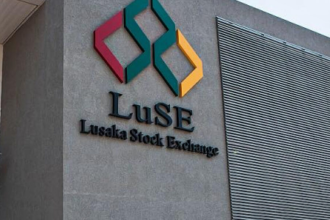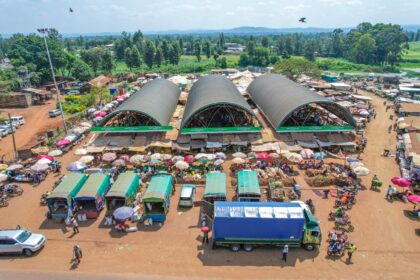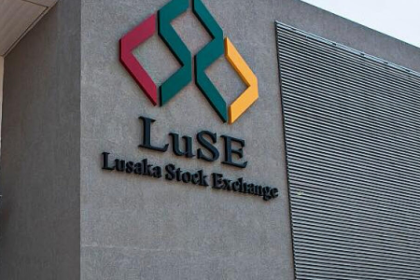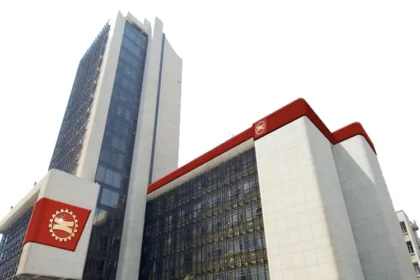At a Glance
- Egypt, South Africa, Nigeria, Algeria, Morocco, and Ethiopia rank among the world’s top 60 economies, outperforming many European nations.
- Africa’s GDP growth slowed to 3.1% in 2023 due to structural issues and global disruptions like rising food and energy prices.
- Egypt leads with a GDP of $395.9 billion, driven by manufacturing, tourism, and ICT, while Nigeria’s economy relies heavily on oil exports.
When the conversation turns to the top economies in Africa—or the world—the focus often falls on Gross Domestic Product (GDP), a measure that captures the sum of a nation’s consumption, investment, and net exports.
GDP figures offer a snapshot of economic size, and on this scale, nations like Egypt, South Africa, Nigeria, Algeria, Morocco, and Ethiopia lead not just on the continent but globally—ranking among the world’s top 60 economies, often outpacing European countries.
While African nations push forward with bold reforms to reshape their economy and financial structure, they face ongoing challenges. Growth is hindered by deep-rooted structural issues and global disruptions, including rising food and energy prices fueled by geopolitical conflicts, climate-related impacts on agriculture, and political instability. These dynamics have slowed Africa’s real GDP growth to 3.1 percent in 2023, down from 4.1 percent in 2022.
Despite these hurdles, 10 African countries boast GDP figures exceeding $79 billion, surpassing the economies of certain European nations like Belarus, Slovenia, and Serbia. Egypt, South Africa, and Nigeria each have GDPs above $360 billion, placing them ahead of Romania, Chile, Finland, Portugal, and New Zealand.
Using the latest World Bank data, Shore.Africa has compiled a definitive list of the top 10 African economies—illustrating the continent’s significant presence on the global economic stage.
- Egypt
GDP: $395.9 billion
Egypt ranks as Africa’s largest economy, with a GDP of $395.9 billion as of December 2023. Known for its iconic tourist attractions like the Pyramids of Giza and the Tomb of Tutankhamun, Egypt’s economy has been buoyed by recent macroeconomic stabilization efforts and structural reforms. Supported by the IMF’s Extended Fund Facility, significant UAE investments in Ras Elhekma, and financing from institutions like the World Bank and European Union, Egypt’s economy is robust and diverse. Key sectors include manufacturing, tourism, wholesale and retail, agriculture, and real estate. In the fiscal year 2022/23, the manufacturing sector contributed 16% to GDP, while tourism accounted for 14.21% of exports, and agriculture added 11%. The ICT sector, Egypt’s fastest-growing industry, grew 16.3% and contributed 5.8% to GDP in FY 2023/24.
- South Africa
GDP: $377.78 billion
With a GDP of $377.78 billion, South Africa holds the position of Africa’s second-largest economy. Known as the “Rainbow Nation” for its cultural diversity, South Africa is also the continent’s most industrialized country, though it faces significant economic inequality. Key drivers of its economy include finance, manufacturing, trade, and utilities. Finance, real estate, and business services are particularly impactful, contributing heavily to the country’s GDP. South Africa’s economy is closely tied to global markets, with exports led by precious and base metals, agricultural goods, and military equipment. Major trading partners include China, the United States, Germany, and Japan.
- Nigeria
GDP: $362.81 billion
Nigeria, with a GDP of $362.81 billion, is Africa’s most populous nation and a hub of cultural and economic influence. Known for its booming film industry, Nollywood, Nigeria is also a leader in fashion, tech, and the creative arts. Oil and gas exports dominate, accounting for over 95% of export earnings. However, agriculture, services, and trade sectors also significantly contribute to the economy. Despite its size, Nigeria struggles with high poverty rates, with about 87 million people living below the poverty line in 2023. Limited job opportunities and weak entrepreneurial support drive many Nigerians to seek better prospects abroad.
- Algeria
GDP: $239.89 billion
Algeria, with a GDP of $239.89 billion, is the fourth-largest economy in Africa and a key player in the MENA region. The country has achieved substantial poverty reduction over the past two decades, driven by infrastructure investments and social policies. Algeria’s economy is heavily reliant on the oil and gas sector, which accounts for about a quarter of GDP, over 90% of exports, and roughly 40% of government revenue. Recent economic reforms, including a new Hydrocarbon Law and relaxed foreign ownership restrictions, aim to diversify the economy and attract foreign investment.
- Ethiopia
GDP: $163.69 billion
Ethiopia, Africa’s second-most populous nation, has a GDP of $163.69 billion, making it the fifth-largest economy on the continent. Known for its fast economic growth, estimated at 7.2% in FY 2022/23, Ethiopia’s economy is primarily driven by agriculture, which contributes 46% of GDP and employs 85% of the population. Major exports include coffee, khat, and gold. Although Ethiopia’s economic growth has been impressive, the country remains one of Africa’s poorest, with a per capita GNI of $1,020. Ethiopia aims to achieve lower-middle-income status by 2025.
- Morocco
GDP: $141.11 billion
With a GDP of $141.11 billion, Morocco is the sixth-largest economy in Africa. The country relies heavily on raw material exports, yet it is diversifying, with significant growth in sectors like tourism, telecommunications, and renewable energy. Key industries include automotive, electronics, aeronautics, and offshoring, alongside traditional sectors like mining and agriculture. Morocco’s modern economy represents more than two-thirds of its GDP but employs only about one-third of the workforce.
- Sudan
GDP: $109.33 billion
Sudan, with a GDP of $109.33 billion, faces significant economic challenges, primarily due to ongoing armed conflicts, which have caused thousands of casualties and displaced millions. Agriculture and oil exports are the backbone of Sudan’s economy, though recent conflicts have severely impacted economic performance. The country’s GDP is projected to contract by 5.9% in 2024 but is expected to rebound if peace is achieved. Inflation, currently at extremely high levels, is forecasted to decrease gradually with improved fiscal stability and economic recovery.
- Kenya
GDP: $109.33 billion
Kenya, East Africa’s largest economy with a GDP of $109.33 billion, is renowned for its scenic landscapes and wildlife. Kenya’s economy is diverse, driven by financial services, agriculture, real estate, and tourism. In 2023, Kenya’s economy grew by 5.2%, supported by a rebound in agriculture and steady growth in services. Key challenges include poverty, youth unemployment, and vulnerability to economic shocks. Nevertheless, Kenya’s ongoing political and economic reforms contribute to its stable growth outlook.
- Angola
GDP: $84.72 billion
With a GDP of $84.72 billion, Angola is the largest Portuguese-speaking economy in Africa. Following several years of economic difficulty, Angola’s GDP saw a 4.1% growth in early 2024 due to a rebound in oil production and strong performance in the services sector. Oil remains Angola’s primary export, benefiting from higher global prices and increased production, which has helped boost the country’s current account surplus. Angola’s government is gradually pursuing economic diversification to reduce reliance on oil revenues.
- Tanzania
GDP: $79.16 billion
Tanzania, home to iconic sites like the Serengeti and Mount Kilimanjaro, ranks as one of Africa’s largest economies with a GDP of $79.16 billion. Tanzania’s economy is driven by services, agriculture, and construction, with tourism and financial services as significant contributors. In 2023, Tanzania’s economy grew by 5.2%, bolstered by robust performance in services and agriculture despite environmental challenges. The government continues to implement structural reforms aimed at strengthening the business environment and encouraging private investment.















